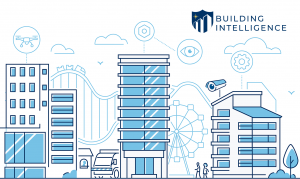Mitigate Risk in the Workplace
There is a psychological term known as optimism bias, which is the idea that although individuals know that bad things happen, they tend to believe that bad things can’t happen to them. We often see this play out not only in personal life but in career situations as well. Having a plan ready in case bad things happen is essential, and this is especially true when it comes to workplace security.
Companies face risks every single day, and if there is no risk management plan in place, the consequences can be detrimental. Even when a pandemic like COVID-19 hits, a visitor management system with visitor policies helps your company remain operational safely and securely. Benjamin Franklin said it best – “If you fail to plan, you are planning to fail.”
Why Risk Management Matters
Businesses run into risks all the time. According to Norton, in the first half of 2019, 4.1 billion records from company databases were exposed. That data included names, addresses, income, bank account information, and even social security numbers in some cases. Billions of people had their personal information stolen over six months. This can cost a company their customer’s loyalty, and they may never regain that brand loyalty as a result. When companies take the time to consider how much a situation like a data breach can cost them, investing in the creation of a risk management plan is well worth it.
What kinds of risks can a company face?
- Physical risks include any events that can hurt people or damage the property of a company. Natural disasters, pandemics, vandalism, theft, and fire hazard are all examples of physical risks.
- Cyber risks damage the digital property of a business. The data breaches mentioned above are cyber risks, as are less harmful events like power outages.
- Legal risks are extremely important for companies to be aware of. Staying compliant with all government compliance regulations is a crucial part of running a business.
- Strategic risks involve any business decisions that may hurt a company’s reputation or economic position. An example of strategic risk is collaborating with a controversial company on a new product launch.
How To Plan For Risk
Risk Identification
To best mitigate risk, managers must first analyze the different types of risks that they may face. There are universal risks that almost every company faces, and there are also industry-specific risks. Physical risk, for example, is relatively universal. A big factor in physical risk is location. What natural disasters are highly probable in the area? What is the crime rate in the city? Have businesses nearby dealt with any workplace security risks and, if so, what were they? How often did they occur?
Risk Assessment
Logically, a company should proportion its risk management resources depending on the total impact of an event. The total impact is the product of the likelihood of a risky event occurring and the impact of the event, be it financial or reputational. A high-impact risk should be allocated more resources than a low-impact risk. For instance, the physical risk might be more likely to happen daily versus strategic risks that might only take place a few times a year.
Identify Warning Signs
A warning sign indicates that a potential event is going to occur. A warning sign in the case of workplace security could be many things, from a security pop-up on an executive’s computer to disorderly conduct of a visitor in the front lobby. Risk managers use their knowledge of disaster scenarios to reduce the potential of risk in its early stages. A visitor management system is an easy way to catch warning signs of unwanted visitors. Our cloud-based software, BreezN, features ID scanning, internal watchlists, and background checks to ensure dangerous or barred visitors are not permitted onto the premises.
Create a Risk Management Plan
Once the risks have been fully identified and assessed, it’s time to come up with a plan. The plan will include step-by-step solutions to mitigating the chances and the impact of each risk. The plan then should be communicated with all employees; awareness of what to do in a risky situation is imperative for all staff to understand.
Review and Repeat
Make sure to regularly review and add to the list of potential risks of which your company is susceptible. Risk management is constantly evolving because the world is constantly evolving, so staying up to date is a necessity. New workplace security trends like cloud-native technologies, two-factor authentication, visitor management, and end-to-end encryption, are just a few of the ways to leverage new technology to benefit your business.
Risks in a Complex Environment
One industry that may face a greater challenge in implementing a risk management plan is the hospital and healthcare industry. According to the Department of Justice’s National Crime Victimization Survey, the average annual rates of non-fatal violent crime were significantly higher in healthcare-related jobs than that of other occupations. Nurses, physicians, and mental health professionals tend to see more physical risk, namely violence and aggression, at the workplace than all other public-sector professionals, but only 40% of emergency room personnel have had formal training in dealing with violent visitors at the workplace.
How Visitor Management Helps Business
A visitor management solution can stop an unwanted visitor in the front lobby. A digital check-in solution can screen visitors against watchlists, automatically barring those with a history of violence from entry. If the visitor passes the watchlist and background checks, their photo is taken and printed on a visitor badge. Customizable visitor badges allow staff to recognize if visitors are permitted on the premises or if they’re in unauthorized areas. A real-time digital record of who enters and exits the facility allows your security personnel to have full security transparency at all times. These capabilities are just not available with a paper logbook. Introducing these security solutions instantly improves a company’s overall physical security, lowering the risks associated with visitor and vendor traffic.
By emphasizing risk management plans and upgrading security measures, you are choosing to protect the physical and digital safety of your employees and clients. Invest in security today by calling Veristream experts at 1-888-718-0807 or schedule a demo to learn more about the benefits of a visitor management solution.



